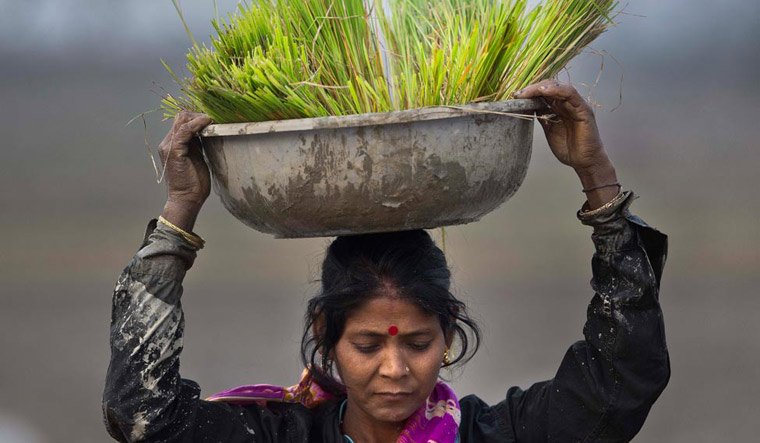Last year, some of their fellow farmers fell prey to merciless bullets fired by police during a farmers' protest at Mandsaur in Madhya Pradesh. However, the ghastly incident did not prevent other farmers from undertaking a similar protest this year seeking better crop price from their licensed buyers this year.
The farmers may or may not succeed. But plans are already afoot to hike farm input prices by five to 10 per cent. With drought prevailing in various parts of the country for the past two years, the $30 billion agri-industry sector in India has seen a dip in business.
"We were unable to revise prices or improve our businesses for the past two years. The morale of our team was also low due to the drought scenario," explains Rajesh Agarwal, managing director, Insecticides India Ltd (IIL). "This year, with normal monsoons, we expect to pass on broadly a 10-per cent price increase across our offerings," Agarwal added. IIL is a major player in the segment and has more than 120 products for varied crops-specific pest and disease.
Agarwal explains that over the last two years, his company has faced the brunt of tightness in supply in the global chemicals market. “Prices of inputs for us have gone up, but with less demand during the drought years we managed well,” he says.
This year, a normal monsoon rain forecast has alerted agri-input firms about their stock positions. Farmers start planting kharif season crop after the initial rain showers of a four-month southwest monsoon season.
Hopes of good rain showers have also spiked hopes of a price hike. “This year, there will be a price increase definitely," Agarwal said. Pesticide firms do 65 per cent of their annual business during the monsoon season.
Hence, industry federation Pesticides Manufacturers and Formulators Association Of India (PMFAI) is seeking government's approval for the hike. The hike is likely to be across the board and would come later this month, as soon as the ministry of chemical and fertilisers approve the hike.
IIL is also planning to launch eight new super-specialty new-age products this year, enthused by the normal monsoon forecast.
Another company, Dhanuka Agritech, is also eyeing favourable business opportunities, thanks to the normal monsoon forecast. "With normal monsoon rains and the government's farmer-centric policy, we are hoping our business to improve by 15 per cent this year," said M.K. Dhanuka, managing director, Dhanuka Agritech.
Dhanuka affirms that his company had also planned to hike prices of his products by five to 10 per cent. Dhanuka Agritech is also a major producer of herbicides and pesticides.
"We are launching five new products this year. I just hope that the distribution of rains is well-spread," said Dhanuka. Last year, despite a normal monsoon rain prediction by the India Meteorological Department, poor rain distribution had led to drought-like conditions in several regions.
Fertiliser companies, too, are facing a pricing pressure, after the recent rise in natural gas prices and due to a falling rupee. "For every one US dollar rise in gas costs, cost of urea production rises by Rs 1,800-2,000 per metric tonne. For every one rupee depreciation against the US dollar, the price rise is Rs 240 per tonne," said Sameer Goel, managing director of Coromandel International, a south India-based fertiliser producer.
"It is not a confirmed thing as yet, but we have approached the government to permit a five per cent hike in fertiliser prices this year," Goel, also an important member of Fertilisers Association of India, told THE WEEK.
Some experts feel that the price pressure on agrochemicals this year would be might also prove unfavourable to the government's subsidy bill. "The GoI’s (Government of India) urea subsidy bill for FY2019 (2018-19) is expected to reach around Rs 54,000 crore against the budgetary allocation of Rs 45,000 crore, driven by rising gas costs and currency depreciation," K. Ravichandran, senior vice president and head, corporate ratings, ICRA, said in a research note.
According to official sources in the ministry of chemicals and fertilisers, Union minister Ananth Kumar may soon send a demand for grant seeking additional funds from finance minister Arun Jaitley.
Meanwhile, expectations are building up on the Modi administration for concrete action. Farmers, who will bear the price hike impact, are waiting for his price promise, linkages with markets and escaping the tyranny of licensed buyers. And consumers in cities, await the availability of fresh farm produce at a reasonable price in their local markets.


